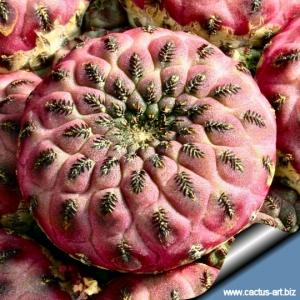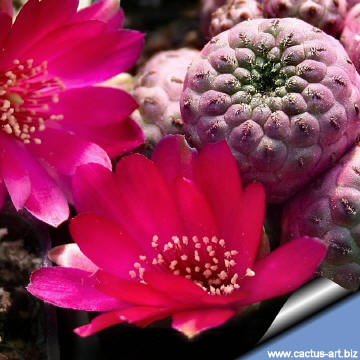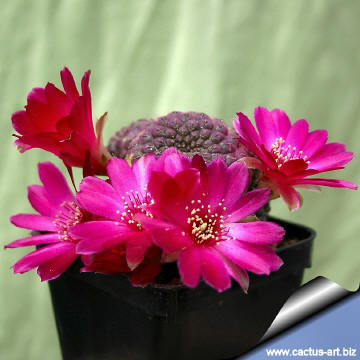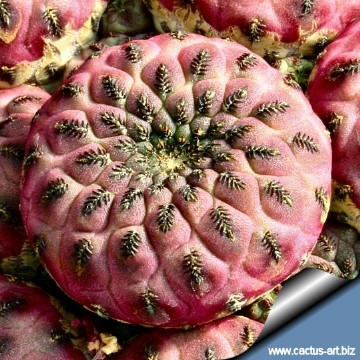|
Beautiful super selected form with nice and distinctive dark violet body. Unique and unmistakable! Grown in a 6x6 cm square pot. OWN ROOTS.
Family: Cactaceae(Cactus Family)
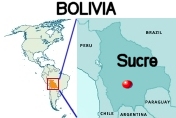
Sulcorebutia rauschii forma. violacidermis
Distribution: Sucre, Chuquisaca, Bolivia
Conservation status: Listed in CITES Appendix II.
Etymology: The etymology of the forma name "violacidermis" derives from the Latin word “violaceus” which means “skin”. ( The form name implies: "with violet skin").
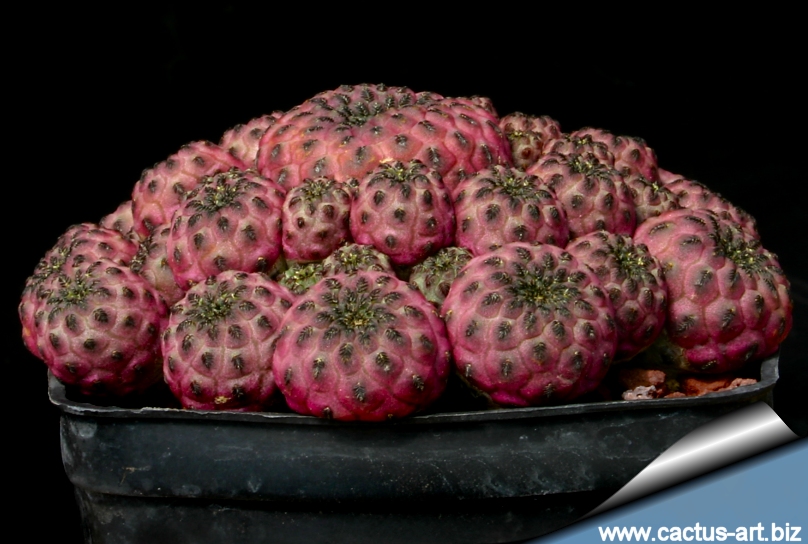 Sulcorebutia rauschii WR289 Sucre, Chuquisaca, Bolivia forma "violacidermis" Sulcorebutia rauschii WR289 Sucre, Chuquisaca, Bolivia forma "violacidermis"
Beautiful super selected form with nice and distinctive dark violet body.
|
|
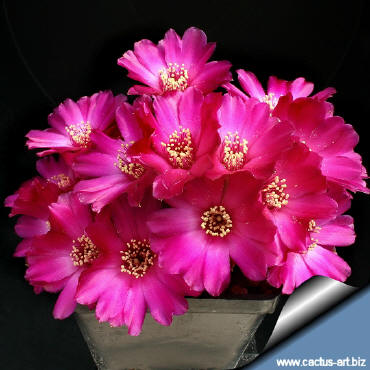
|
Description: Miniature clustering species (rarely solitary), readily forms clumps of many heads
Stem: individual stems 2(4) cm tall, 3(5) cm in diameter. The stem is covered by flat tubercles (5mm wide), which vary in colour between violet-green and bright mauve. In older plants tubercles are arranged in up to 16 spiral line merging in the apex.
Areoles : Long, narrow, with short white felt.
Spines: 9-11, short, black radial spines, 1 to 2 mm long, pointing diagonally and downward, completely flattened against the tubercles.They take the characteristic form of a fishbone.
Roots: Conical
Flower: 20 - 50 mm long, 35 - 50 mm wide; floral tube funnel-shaped yellowish green with tan coloured scales, tepals deep magenta with a clearer throat.
Fruit: Reddish brown, 4 - 5 mm wide.
Phenology: Blossoming time: late spring.
Cultivation: It's very difficult to find high quality plants of this species in cultivation, S. rauschii loves a very permeable, coarse mineral soil. It must strictly be kept dry throughout the winter quiescent period since it is very sensitive to any moisture excesses, To prevent rottenness it is also advisable to surround its root neck by very rough sand or grit. This helps a fast water drainage and an appropriate air circulation.
For its sensitive roots this species is frequently grafted to avoid root problems. Plants grafted on Opuntia compressa are easy to grow and quite frost hardy -5 (-10)° C
Watering Needs: Water moderately in the growing season, keep dry during the winter rest
Frost Tolerance: Overwinter in a cool place (at 0/10°C). This is important for the flowers as well as for plants' health. Without this cool winter period they normally won't get any buds.
Propagation: Seed, cutting, grafting
Sun Exposure: Needs a full sun exposure (light shadow may be useful in the hottest summer days)
Propagation: Seed, cutting, grafting.
|

